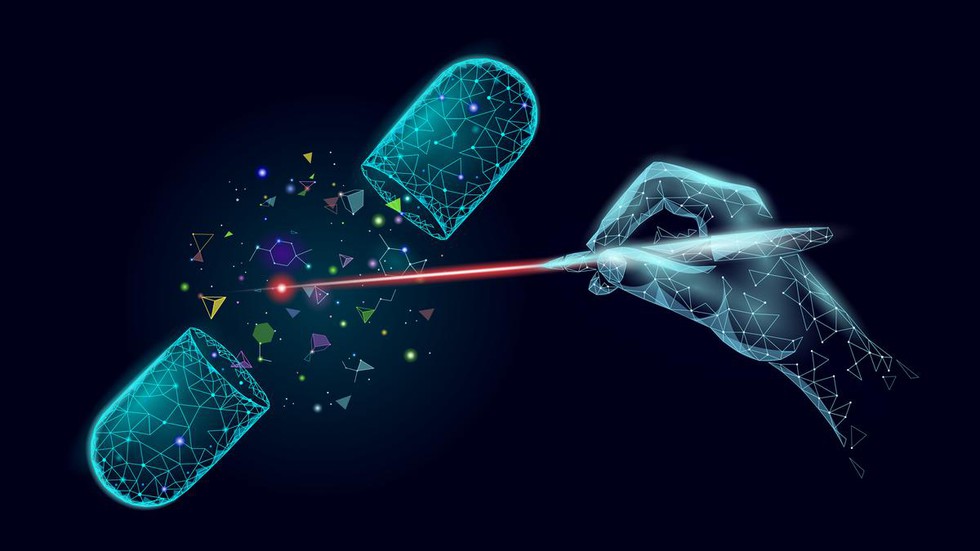Drug development is traditionally an expensive and time-consuming process. However, the advent of Artificial Intelligence (AI) has introduced new possibilities for fast-tracking this process, offering the potential to reduce costs and time significantly.
Target Identification and Validation
- Target Definition: A biological molecule, typically a gene or protein, that a drug binds to in order to exert its effects.
- Druggable Proteins: Only proteins with specific binding sites suitable for drug docking are considered druggable.
Discovery Phase
- Protein Identification: Target proteins are identified by inputting protein sequences into computers that search for the best-fitting drugs from a library of small molecules.
- Computational Models: If the structures of the target protein and drug are unknown, computational models predict the binding sites.
- Advantages: This phase avoids expensive and time-consuming lab experiments and reduces the high failure rate of initial testing.
Pre-Clinical and Clinical Phases
- Pre-Clinical Testing: Potential drug candidates are tested outside a biological system, using cells and animals, to assess safety and toxicity.
- Clinical Testing: Drugs are tested on small groups of human patients before larger trials to confirm efficacy and safety.
- Regulatory Approval and Marketing: Successful drugs undergo regulatory approval and post-market surveys.
AI Tools and Their Impact
- AlphaFold and RoseTTAFold: Developed by DeepMind and the University of Washington, respectively, these AI tools have revolutionized computational drug development.
- New Versions: AlphaFold 3 and RoseTTAFold All-Atom offer advanced capabilities, including predicting structures and interactions for combinations of proteins, DNA, RNA, small molecules, and ions.
- Performance: AlphaFold 3 has shown superior accuracy in predicting interactions compared to previous versions and other tools.
Advantages of AI
- Time and Cost Efficiency: AI can drastically cut down the time and costs involved in target discovery and drug-target interaction predictions.
- Accuracy: AI tools improve the accuracy of predicting the interactions between drugs and their targets.
Accuracy and Phase Limitations
- Prediction Accuracy: AI tools provide up to 80% accuracy in predictions, with reduced accuracy for protein-RNA interactions.
- Phase-Specific: AI mainly aids in target discovery and interaction predictions but cannot replace pre-clinical and clinical testing.
Technical and Infrastructure Challenges
- Model Hallucinations: Diffusion-based architectures can produce incorrect predictions due to insufficient training data.
- Code Access: The code for AlphaFold 3 has not been released, limiting independent verification and broader utilization.
Infrastructure and Skills Gap
- Computing Infrastructure: Developing AI tools requires large-scale computing infrastructure with fast GPUs, which are expensive and quickly become outdated.
- Skilled Workforce: India lacks a sufficient number of skilled AI scientists, which hampers the development of AI tools for drug development despite a strong background in related fields.
Future Prospects for India
- Pharmaceutical Potential: With a growing number of pharmaceutical organizations, India has the potential to lead in applying AI tools for target discovery, identification, and drug testing.
Multiple Choice Questions (MCQs):
- What is the first phase in the drug development process?
- A. Pre-clinical testing
- B. Target identification and validation
- C. Clinical testing
- D. Regulatory approval
- Which AI tools have been developed to aid in drug development?
- A. TensorFlow and PyTorch
- B. AlphaFold and RoseTTAFold
- C. IBM Watson and Deep Blue
- D. GPT-3 and DALL-E
- What is a significant difference between AlphaFold 3 and its previous versions?
- A. It predicts only static structures of proteins.
- B. It predicts structures and interactions for any combination of protein, DNA, RNA, small molecules, and ions.
- C. It only works with known protein structures.
- D. It has a lower prediction accuracy compared to earlier versions.
- Which phase involves testing drug candidates on human patients?
- A. Discovery phase
- B. Pre-clinical phase
- C. Clinical phase
- D. Regulatory approval phase
- What is one of the limitations of AI tools in drug development?
- A. They can replace the clinical testing phase.
- B. They can predict protein-RNA interactions with high accuracy.
- C. They can only aid in target discovery and drug-target interaction.
- D. They do not require large-scale computing infrastructure.
- What challenge is associated with diffusion-based AI architectures?
- A. They are too expensive to develop.
- B. They produce incorrect or non-existent predictions due to insufficient training data.
- C. They require manual data input.
- D. They are not suitable for any phase of drug development.
- Why has India not established a first-mover advantage in developing AI tools for drug development?
- A. Lack of interest in AI applications
- B. Insufficient large-scale computing infrastructure and a lack of skilled AI scientists
- C. High costs of developing traditional drugs
- D. Preference for manual drug development processes
- What is a potential future advantage for India in the field of drug development using AI?
- A. Availability of outdated GPU technology
- B. Growing number of pharmaceutical organizations
- C. Low cost of drug development without AI
- D. Limited knowledge in protein X-ray crystallography
